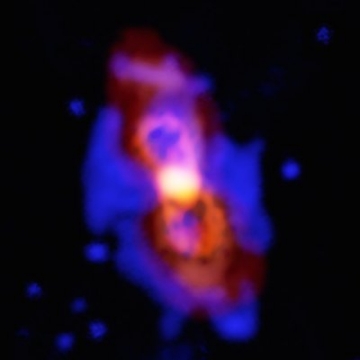Earlier this year, ALMA saw its receiver complement extended with the installation of the last Band 5 receivers. These receivers were built by a European consortium consisting of the Nederlandse Onderzoekschool voor Astronomie (NOVA) and the Group for Advanced Receiver Development (GARD). The first science results with this brand new receiver are already starting to appear. One exciting result is the detection of a radioactive molecule in CK Vulpeculae, which heavily relied on ALMA Band 5, as well as the discovery with the prototype Band 5 receiver at APEX.
ALMA Band 5 Enables the Discovery of Radioactive Molecules
Published: 20 Aug 2018

Image: Composite image of CK Vulpeculae, the remains of a double-star collision. The red, diffuse image is an ALMA image of the broader dust in the region. The blue is optical data from the Gemini observatory.
Image credit: ALMA (ESO/NAOJ/NRAO), T. Kamiński; Gemini, NOAO/AURA/NSF; NRAO/AUI/NSF, B. Saxton.
